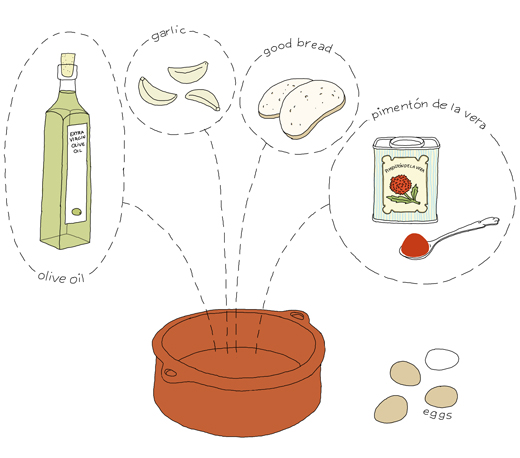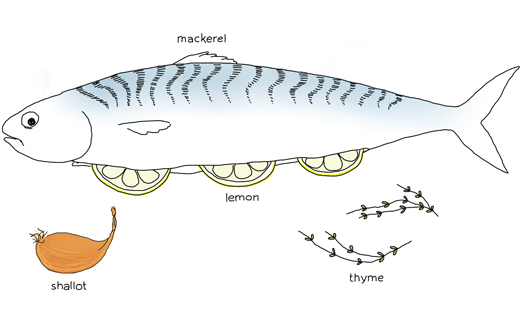
Ibán Yarza is a self-taught baker (and bike mechanic) based in Barcelona where he organizes baking classes and promotes good bread for everyone. I first got to know of him through his site ¿Te quedas a cenar? (“Are you staying for dinner?”) and for the last few years we have been talking through twitter, mostly about baking, cookbooks and Sweden. Iban runs two other websites that are only dedicated to bread, La Memoria del Pan where he shares stories and interviews and El Foro del Pan which is the leading bread forum in Spain (they have one section in English).
Ibán has been to Sweden several times and he probably knows much more about traditional Swedish baked goods than many Swedes. Last year he worked as a volunteer at Ramsjö Gård, an organic farm in Björklinge (north of Stockholm) where he followed their daily work for 2 months. Lately Ibán has been seen on Spanish Television where he bakes together with David Jorge and Robin Food. In one episode he bakes my absolute favorite, a classic Swedish Cardamom bun.
Ibán has an education in journalism and translation. In 2010 he translated Dan Lepard‘s book “The Handmade Loaf ” from English to Spanish.
I’m so happy I finally asked Ibán to be my guest here on Kokblog. Welcome!

Sopa de Ajo – Traditional Spanish Bread Soup
by Ibán Yarza
There is a certain austerity to many traditional Spanish dishes that I find utterly appealing. It probably has to do with the fact that I grew up with my grandparents, my grandmother being a classic example of a Spanish cook: hardly any spice in the cupboard, simple and honest ingredients bought daily at the local market and cooked in the simplest of ways (stewed, boiled, braised, fried) always respecting the flavor of the ingredients in the pan. Simple as they can be, some recipes that date back to the Middle Ages can bring unique emotions to our table, well in the 21st century. Sopa de ajo (literally “garlic soup”) is one of those dishes, an example of the great cuisine of bread, the kingdom of leftovers and the audacity to make the best out of what’s in the larder. A simple and filling meal made out of stale bread, what many Spaniards would definitely refer to as their favorite wintertime comfort food (another soup, gazpacho, most likely being its summertime counterpart).
If one had a look at the menu of top-notch Spanish restaurants over the last years, a clear Asian influence would be easily noticeable, in the form of a zen-esque approach to elaborations and presentations. However, if you dive deep enough into traditional Spanish cookbooks, simple, minimal recipes appear with an almost-spiritual scarcity of means and ingredients that could seduce any Zen master. A famous Spanish writer and gourmet, Xavier Domingo, once described traditional Spanish cookery as “a minimal cuisine”, with only three basic foundations: olive oil, garlic and bread. Sopa de ajo remains a peerless example of this.
Then there is something about the word “sopa” (soup) and bread, the essential food. They go hand in hand in the mind and speech of Spaniards. Even to this day, the first meaning of this word in Spanish does not refer to the liquid food, but to a piece of bread soaked in liquid. In fact, “hacer sopas” (literally “to make soups”; this is, to soak bread in stock, coffee or whatever is at hand) seems to remain a favorite way of eating in my homeland, both pleasant and nutritious. You can find soups made with bread throughout Spain, from North to South, from Majorca to Andalucía, cold and hot, thick and light, meaty or full of vegetables. The recipe below is perhaps the best known version, where only four ingredients (bread, garlic, olive oil and paprika) are able to convey childhood memories and a bit of daydreaming on a dull winter evening. As any traditional meal, recipes vary from one family to another.
Seasonal hint: because of the lack of meat, this soup has traditionally been a Lent dish; in fact, the whole concoction is plain and clear frugality. Rejoice.

Sopa de Ajo
(serves 4)
150 – 200 g of good bread, stale. Life is too short to eat bad bread, even if it’s stale. I like to keep the crust for flavor, color and texture. Traditionally we would use a white dense wheat loaf, but feel free to use wholemeal, sourdough… I’ve even cooked delicious sopas de ajo using rye bread (to my fellow countrymen’s disdain)
3-5 cloves of garlic, sliced
3 tsp paprika. The best you can find, my favorite is smoked bittersweet Pimentón de la Vera, available nowadays in gourmet shops worldwide
1 – 1,5 dl extra virgin olive oil. Again, try to find good oil: dense, deep and fragrant. We are using few ingredients, so try to find the best
1,5 liter water (or stock, if you happen to have it at hand; but water is more than OK).
4 eggs (optional)
Traditionally, in Spain you would use a clay pot for this recipe, but any deep pot would do. Slice the cloves of garlic and fry them in olive oil until they’re golden (I tend to think that the amount of olive oil we use in Spain would seem rather large abroad; just don’t be shy, pour it in). Take the pieces of garlic out of the pan and keep them aside so they don’t burn and turn bitter. Now place the bread in the pan and fry in the remaining oil (it will soak up part of the oil). Take the pot off the stove, add the paprika and stir with the bread and oil making sure it doesn’t burn, otherwise it would lose its wonderful fragrance and turn bitter and tart. Once this is done, add the water (or stock) and garlic, and let it simmer for some 10-15 minutes. At the very beginning, it will probably not look the most appetizing of meals, but just be confident, time will bind the soup and the result will be simply delicious.
Some people like to have their sopa de ajo really thick and dry (some even finish it in the oven), I prefer to keep mine just on the creamy side of the term soup, with thick blobs of creamy bread that melts in your mouth. Once the soup has thickened, and while I set the table, I like to take the pot off the stove and use the remaining heat to poach one egg per person. Once at the table, the yolk will break in each guest’s bowl, taking the sopa the ajo experience to its very limit, so to speak. Sometimes I also like to sprinkle a bit of ground cumin. Feel free to add anything you like.






